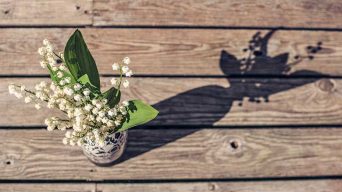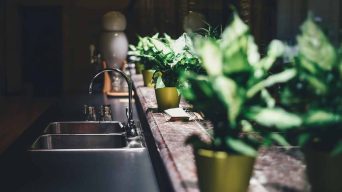Is rainwater good for indoor plants? That is a question that many people have, and the answer is yes.
There are many benefits to using rainwater for your plants.
Rainwater is free of chemicals and is an excellent water source for your plants.
Rainwater is that it is naturally soft. This means that it won’t harm your plants as hard water can.
However, there are a few things to keep in mind when using rainwater for your plants.
This article will discuss everything you need to know about watering plants with rainwater.
Is Rainwater Good for Houseplants?
Rainwater is great for houseplants! It is soft water that is naturally filtered and free of chlorine and other chemicals often found in tap water.
Plants love rainwater, which can help them grow healthy and strong.
If you live in an area with hard water, rainwater can be a real lifesaver for your houseplants.
Hard water is water that has high mineral content. These minerals can build up in the potting soil and make it difficult for potted plants to absorb nutrients.
Rainwater is much gentler on plants and can help to keep their leaves looking green and healthy.
If you are lucky enough to live in an area with soft water, rainwater is still an excellent choice for your plants.
Soft water is water that has low mineral content. This type of water is gentle on plants and is less likely to cause mineral build-up in the soil.
No matter what type of water you have, rainwater is a great way to give your houseplants the hydration they need to thrive.
Does Rainwater Have Nutrients for Plants?
One of the best things about rainwater is that it is naturally filtered. This means that it is free of chemicals and other pollutants that can be harmful to plants.
Rainwater is also a great source of nutrients for plants. These nutrients include nitrogen, phosphorus, and potassium.
These elements are essential for plant growth and can help to promote healthy growth.
Nitrogen is especially important for plants. It is a key component of chlorophyll, which is responsible for the green color of leaves.
Nitrogen is also necessary for the production of proteins, which are essential for plant growth.
Phosphorus is another important nutrient for plants. It is necessary for the development of roots and flowers.
Potassium is essential for the production of chlorophyll and helps to promote healthy plant growth.
Rainwater is a great way to give your plants the nutrients they need to grow and thrive.
Rainwater is also a great source of magnesium, which is essential for chlorophyll production.
Chlorophyll is what gives plants their green color and helps them to absorb sunlight.
Magnesium is also necessary for the development of strong roots and stems.
Does Rainwater Have Any Drawbacks?
While rainwater is a good choice for watering your plants, there are a few things to keep in mind.
The first is that rainwater can be acidic. This is because it contains carbon dioxide from the atmosphere.
To combat this, you can mix rainwater with distilled water. This will help to neutralize the pH and make it safe for your plants.
Another thing to keep in mind is that rainwater can contain harmful bacteria.
To avoid this, you should collect rainwater in a clean container and allow it to sit for at least 24 hours before using it on your plants.
This will give the chlorine time to evaporate and kill any bacteria that may be present.
Is Rainwater Better Than Tap Water for Plants?
Rainwater is often thought of as being better for plants than tap water.
This is because rainwater is naturally soft, while most tap water is hard.
Hard water contains high levels of calcium and magnesium, which can build up on plant leaves and prevent them from absorbing light and getting the nutrients they need.
Rainwater is also free of chlorine, and other chemicals often added to tap water to make it safe to drink.
These chemicals can also be harmful to plants.
While rainwater is generally better for plants than tap water, there are a few things you should keep in mind before using it on your houseplants.
First, rainwater can contain pollutants like dirt, dust, and bird droppings.
If you live in an urban area, the rainwater that falls on your roof is likely to be even more polluted than the water that comes out of your tap.
To be safe, it’s best to collect rainwater in a clean container and let it sit for 24 hours before using it on your plants.
This will give any pollutants time to settle to the bottom of the container.
Another thing to keep in mind is that rainwater is acidic.
This is because it has a pH of around five, which is lower than most tap water (about seven).
While a little bit of acidity can be good for some plants, too much can be harmful.
If you’re not sure whether your plants would prefer acidic or alkaline water, it’s best to err on the side of caution and use tap water instead.
How Do You Use Rainwater for Houseplants
If you want to use rainwater for your houseplants, you can do a few things.
One is to collect the water in a container and then use it to water your plants.
Another is to water your plants by setting them outside in the rain.
How To Collect Rainwater for Indoor Plants
If you want to collect rainwater for your indoor plants, you can do so by placing a container outside during rainfall.
Make sure the container is big enough to catch a lot of water and has a lid to keep the water clean.
You can also set up a rain barrel to collect rainwater.
A rain barrel is a large container placed under a downspout to collect rainwater.
Once you have collected the rainwater, you can use it to water your plants right away or store it for later use.
How To Store Rainwater for Plants
To store rainwater, pour it into clean containers and seal them tightly.
If you do choose to collect rainwater for your houseplants, there are a few things you need to keep in mind to ensure that your plants stay healthy.
- Make sure the container you use is clean and has a lid to keep the water clean.
- If you are using a rain barrel, make sure it is covered so that debris does not get into the water.
- Only collect rainwater from areas that are not contaminated with pollutants.
- Store rainwater in clean containers and use it within a few weeks.
- You may collect rainwater from your roof, but be sure to have a way to filter it before using it on your plants.
- You may not collect enough rainwater to water all of your plants, so you may need to supplement with distilled water or filtered water.
- If you notice your plants are not doing well after watering them with rainwater, stop using rainwater and switch to using distilled water or filtered water.
How Long Can You Store Rainwater for Indoor Plants?
Rainwater can be stored for indoor plants for up to one week.
After that, the water quality starts to degrade, and it is no longer as effective at watering plants.
The rainwater will get contaminated over time, so it is best to use it within a week of collecting it.
If you want to store rainwater for longer than a week, using distilled or filtered water is best.
Leaving Indoor Plants Outside in the Rain
Regularly taking your houseplants outside offers numerous advantages, and another method for utilizing rainwater for them involves letting them be exposed to the natural rainfall.
Leaving your houseplants outside in the rain has some benefits, but you also need to keep some things in mind.
The following are some benefits of your plants out in the rain.
- The rain will wash away any dust or dirt accumulated on the leaves of your plants.
- The rain will also provide your houseplants with a source of fresh water.
- The moisture in the air from the rain can help to keep your plants healthy.
- Your plants will get a deep watering from the rain, which can help to encourage root growth.
- The rain will help clean the soil from salts and minerals that can build up over time.
Now that you know some of the benefits of leaving your indoor plants out in the rain, there are a few things you need to keep in mind.
- Make sure the rain is not too heavy, as this can damage your plants.
- Only leave your plants out in the rain for a short period, as too much exposure to the rain can damage them.
- Bring your plants inside if the temperature drops below freezing, as this can damage your plants.
- Be sure to check your plants for pests after being exposed to the rain.
- If you notice your plants are not doing well after being left in the rain, bring them inside and water them with distilled water or filtered water.
As you can see, there are a few different ways to use rainwater for your houseplants.
If you choose to collect rainwater, make sure you do so safely.
And if you choose to leave your plants out in the rain, make sure you do so carefully.
Either way, rainwater is a good way to water your houseplants.
Just keep an eye on your plants and use distilled water or filtered water if needed.
Final Thoughts
Whether you choose to collect rainwater or leave your plants out in the rain, using rainwater is a great way to water your indoor plants.
Rainwater provides plants with the nutrients they need to grow, and it is a sustainable way to water your plants.
Just be sure to keep an eye on your plants and use distilled water or filtered water if needed, and your plants will be healthy and happy.







